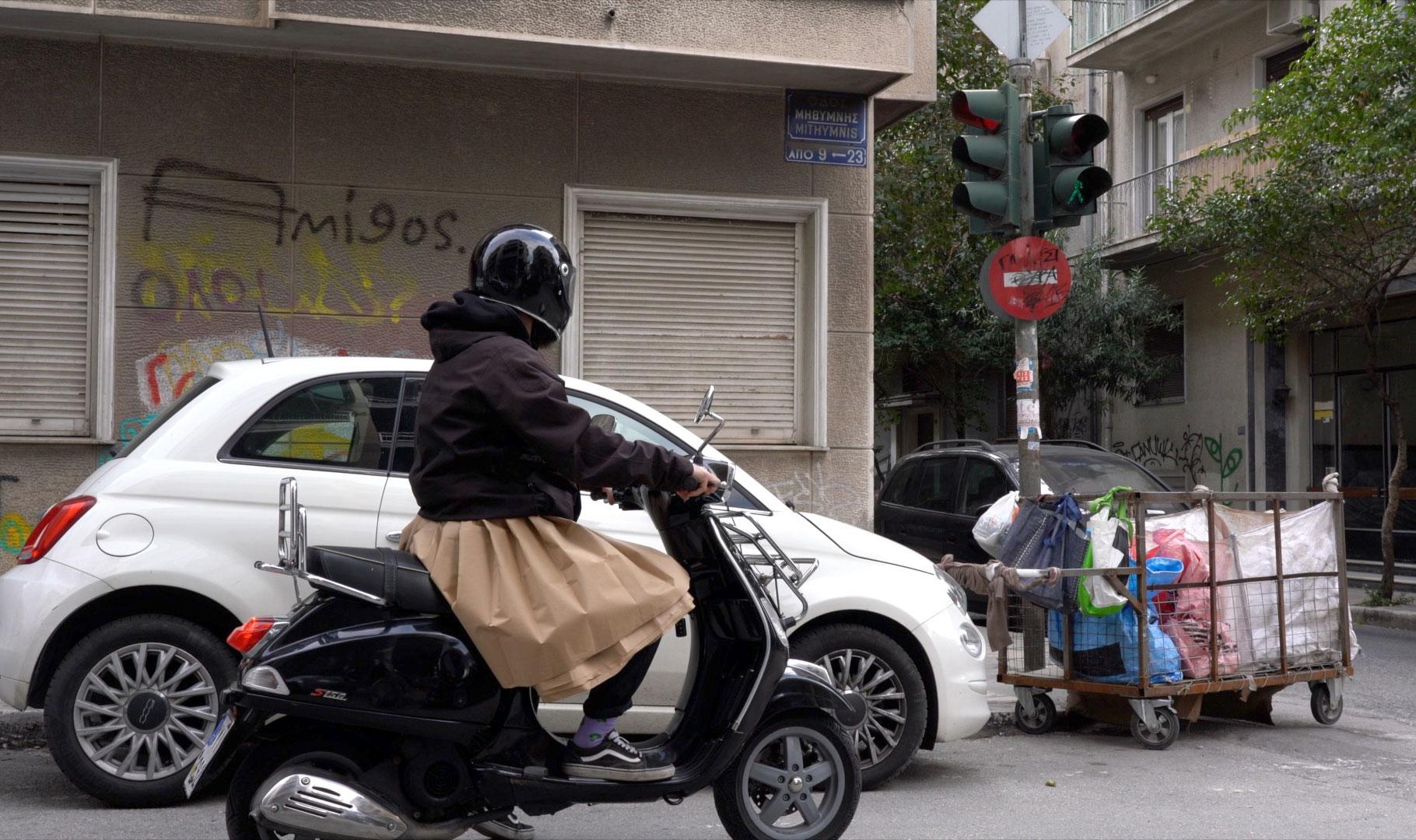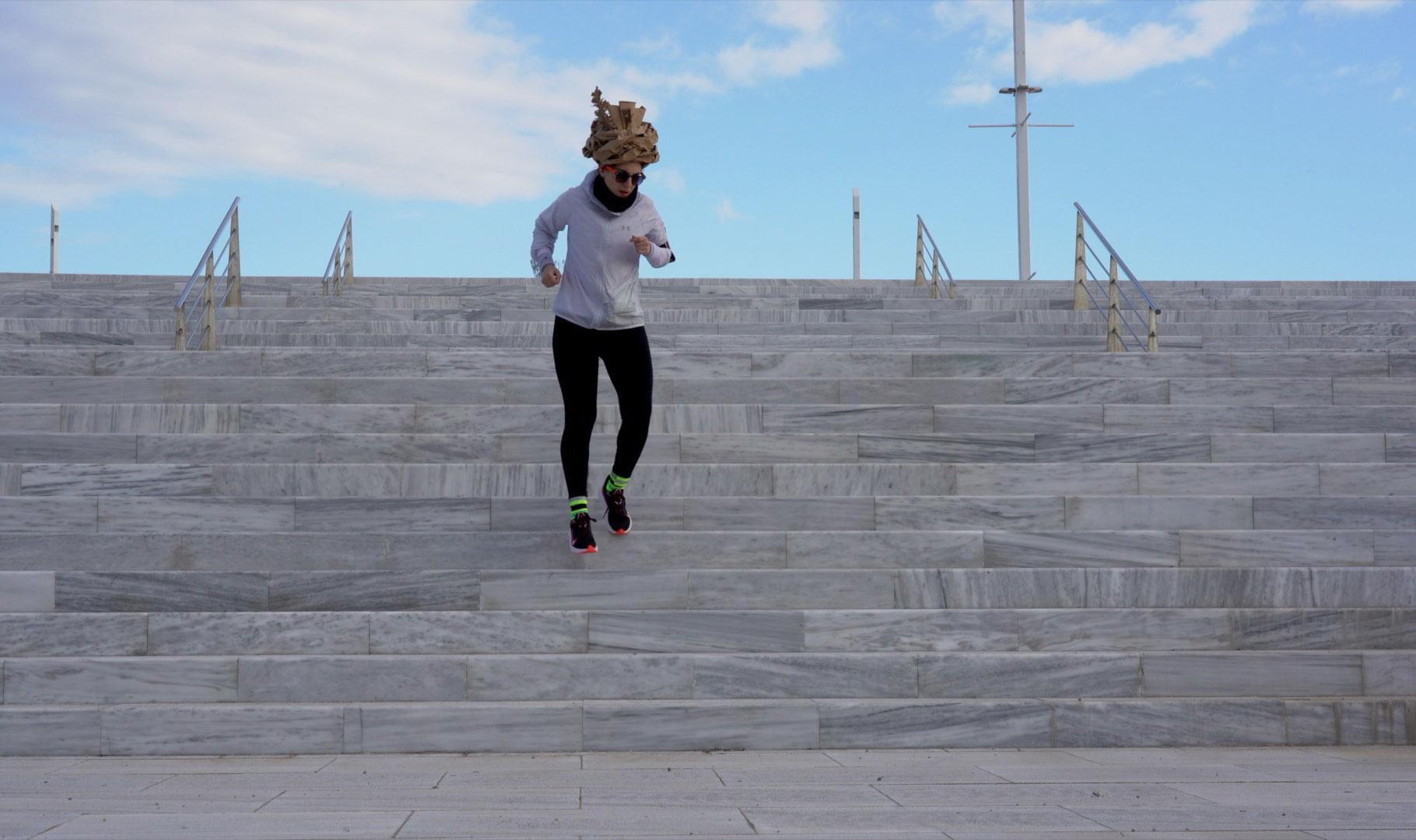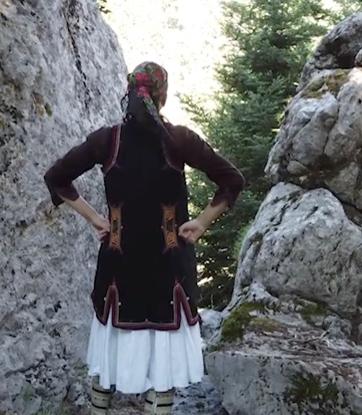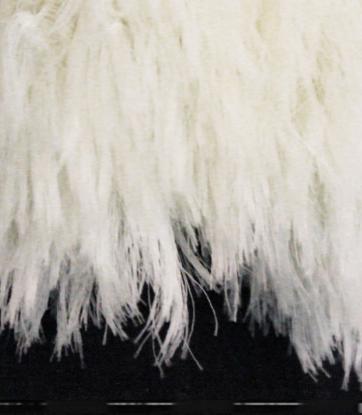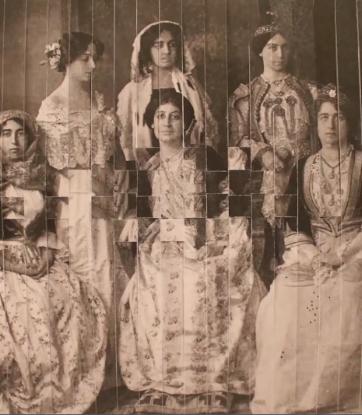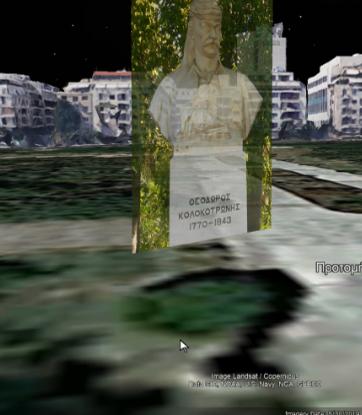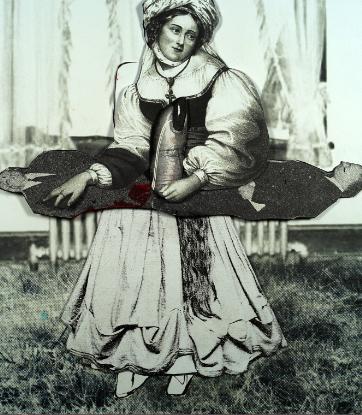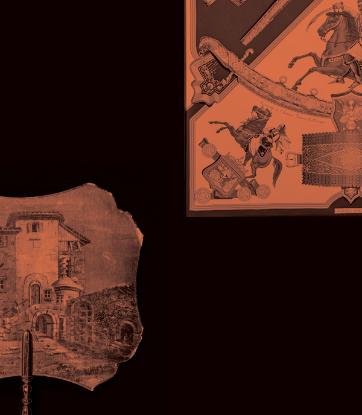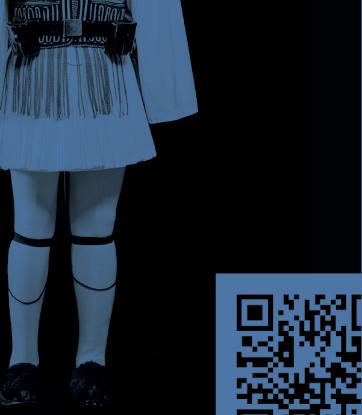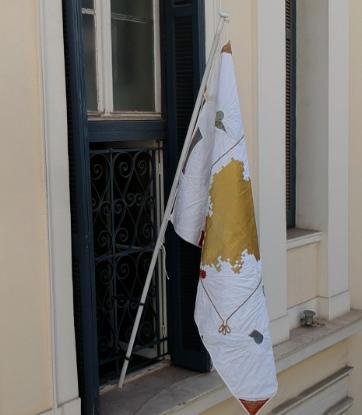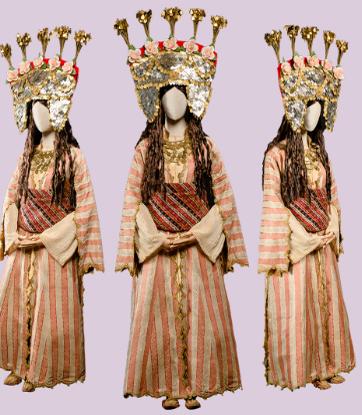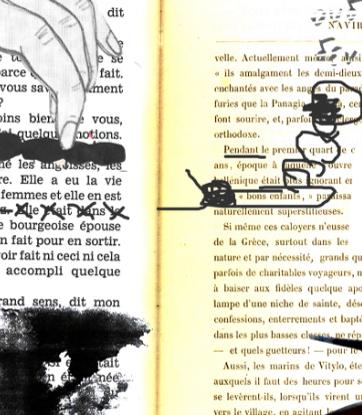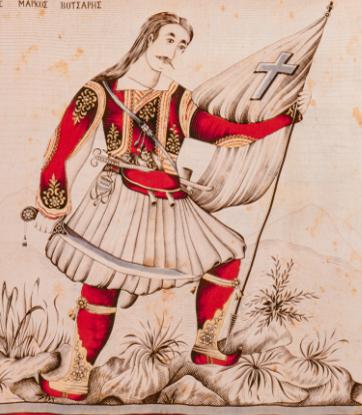passage
Starting from the realisation that the 1821 revolution as a historical reality is a typical case of how anachronism is applied in History, where facts become evident either through narration or through various representations acting as intermediaries, Elektra Stampoulou uses “fragments” of history in her work “passage” in order to create “unsung heroes” out of modern-day people who live among us, while, focusing on the symbolism of clothing, she dresses them à la Grecque. So, by creating a series of semantic images, she transports us to a different battlefield, that of daily life, while inviting and at the same time challenging us to reconsider the meaning of words like “hero”, “heroism”, “heroic models” and “heroic actions”.
The (heroic) actions and events of the Greek Revolution era certainly occurred in one particular way. However the way they were understood and consequently narrated was unavoidably indirect, even where it was done by the eyewitnesses themselves, who wrote the history while it was still raw, practically alive. Historical reality can undergo various uses and interpretations, either because of some expectation of profit (moral or material) or, inadvertently, as the natural consequence of a fickle memory, as Fotakos, a warrior and Kolokotronis’ adjutant admits in his 1858 Memoirs. Facts are concealed or avoided, or the next generations simply “fail to understand their frame of reference”, he adds. Like written texts, the various attempts to reconstruct the past in whichever present time are a second-hand transcription of history, and “depict” persons, events and things with varying degrees of accuracy and verisimilitude.
On what – and also on whom – should one choose to focus, when beyond the great, collective revolution and its protagonists, there are people and groups in the margins of history who are creating small, personal revolutions that shake up entrenched everyday mentalities and overturn age-old conventions?
In searching for a definition of the word “hero” we read that a hero is someone – man or woman (heroine) 1. who accomplishes a brave act, often to the point of self-sacrifice 2. who stands out for their courage, boldness, and bravery, especially in warfare 3. who displays outstanding morals, virtue and self-sacrifice in the service of a higher purpose 4. who executes daring (heroic) acts, and becomes known for them 5. who appears as the basic character of a myth or legend, or as the protagonist of a literary, theatrical or cinematic work 6. who is admired and imitated by others because of possessing abilities greater than those of an average person etc. Furthermore, in the words of poet Nikos Gatsos, “heroes are always kind. They are born with a golden colour, with dreams created by the clouds, with hopes that sprout from the earth… They become cold but national statues and their companion is a dove…” In more prosaic and everyday versions of life, a hero is the central person of a happening.
So we can talk about heroes of History or mythology, fairy tale heroes, cartoon heroes, heroes of science or “everyday” heroes and we can identify with them, just like when we were kids. Indeed, is the word hero in danger through overuse or through neglect? Or through both?
Elektra Stampoulou attempts to illustrate the face of the hero from the point of view of an amateur, of a non-expert, who has never before been exposed to scientific side of history. She molds the image of the hero, but also that of the anti-hero, by drawing raw material from the deposits of her personal memory and by using sporadic and fragmented knowledge deriving from school books or fictional adaptations of the facts for the cinema, literature etc. So she uses the facts as she read them, as she saw them but mostly as she understood them, in the way that surrealists often turned to the subconscious, to dreaming, to fantasy, to instinct, to the absurd and to the coincidental in order to give shape to something.
Therefore, her work disassociates itself from history not because it transforms it into a fantasy, but because the images she forms are already representations of reality and not reality itself. So, through the balanced combination of what is understood as the truth based on historical testimonies and tradition and of what she herself imagines, her work develops along two axes: one making the past topical and the other defusing it as it travels towards the present.
By “dressing” simple and unknown everyday workers as heroes, she comments on the way we perceive the identity of a “hero” and on the stereotypes we have built around it. Stampoulou’s heroes, in their everyday routine within an urban environment, face the problems of modern life that are indirectly shown in her frames (rubbish, the pandemic, noise pollution, traffic, poverty, etc.), while in their passage they meet other heroes but also cross paths with anti-heroes.
But the image she creates for them is also fragmented, as she uses the clothes piecemeal, referring to parts of the ensemble rather than the sum of it (tsarouchia, fustanela, fezes, slippers, swords, scimitars, etc.). However, she chooses sartorial schemes that can be identified with those of the heroes of the Revolutionary War or that acquired the strength of a national symbol with the passage of time. Similarly, she offsets these against others which she believes define the identity of the anti-hero.
However, the garments are made of paper. This is like“[…] the historian[…]who, while trying to recount historical facts on paper, is confronted with a mess of data, which need to be integrated and organised in order to acquire their explanatory value. Therefore, necessarily they “create” a narration[…] “that entails a mutation”. (Dimitris Tsatsoulis, The adventure of narration. Essays on narrative in Greek and Foreign Prose. Ellinika Grammata editions, Athens, 1997, 52-53).
[passage: a. quote, section of text, excerpt and b. act of passing through, alley, walkway]
Tania Veliskou studied History and Archaeology at the Aristotle University of Thessaloniki, receiving scholarships from the Tsagada Legacy Fund for her performance in the programmes of Folklore and Social Anthropology. With a scholarship from the “Maria Heimariou” Foundation, she undertook postgraduate specialisation studies in Museology at the Department of Museum Studies of the University of Leicester, U.K.
She has participated in research programmes at the Aristotle University of Thessaloniki on the documentation and management of costume collections, as well as in folklore research in situ in Northern Greece. She works as a curator at the Museum of the History of the Greek Costume of Lykeion ton Ellinidon, primarily on museological research, museography design and the curation of thematic exhibitions. She is a member of the Hellenic Costume Society.
Elektra Stampoulou
Ιoanna Bisbi
Maria Louizou
George Makris
Dora Pardali
Dimitra Stampoulou
Anna-Maria Stefadourou
Mary Thivaiou
Shovel the dog
Penny Saccopoulou – Valtazanou
Tania Veliskou
